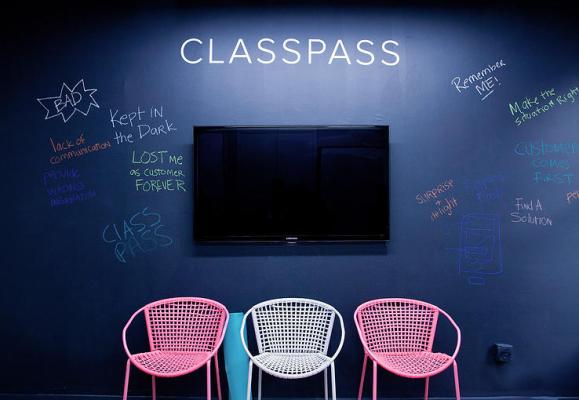Classpass made its name — and picked up 17 million reservations — around a service that let people take an unlimited number of fitness classes for a flat $100 monthly payment. Today, all of that is changing.
See, Classpass functions based on the usage habits of their users. Folks who buy an unlimited membership but don’t work out that much end up compensating for power users who can actually cost the company money. But Classpass has made it so easy to work out that their users end up doubling their usage habits over the course of a membership. The current pricing structure simply doesn’t allow for more power users than folks who work out a few times each month.
To get out ahead of that shift, the company is experimenting with higher, more varied pricing in Boston, as well as introducing a new tier.
Classpass is now offering users a five-pack plan each month. The pricing on this five-pack varies by city based on the average cost of fitness classes in a given market, and rolls out nationwide today.
Founder and CEO Payal Kadakia explained that the unlimited tier, at $100, acted as a barrier to entry for some folks who only work out a few times a month. Investor and board member Fritz Lanman added that many Classpass users run outside or have their own workout regimen, and use Classpass as a supplement.
Beyond the introduction of a five-pack tier, Classpass is also experimenting with pricing across the board, and that starts with some pricing changes in Boston as of today.
New users in Boston will be able to access the five-pack plan for $65/month, along with a ten-pack offering for $120. Unlimited membership is also being bumped up to $180.
“What we’re seeing with Classpass is that, over the course of time, our users begin working out about twice as much as they did when they started,” said Kadakia. “By making the process of signing up for a class so easy, people are doing it more than we expected.”
If you are currently an unlimited Classpass users in Boston, you will be grandfathered in at a discounted price of $150.
If you live in a metropolitan/more expensive market, you can likely expect changes like this in the coming months.
Classpass wouldn’t tell me anything about the average workout habits of their users, so it’s nearly impossible to reverse engineer the business model. But we can speculate.
In Boston, the average price of a fitness class (like the ones Classpass would list on their service) is about $25. Classpass confirmed that the company pays 50 percent of retail price for those classes, meaning that each class attended costs $12.50 (at the $25 price point). (Classpass doesn’t pay for classes unless a user attends that class.)
If a five-pack user goes to all five of their classes in a month, Classpass walks away with a slim $3.50 in profits. In the case of the ten-pack plan, Classpass actually loses $5 if a user goes to all ten classes. And for the unlimited tier, a user would have to go to 15 classes or more to eliminate any margin for Classpass.
When Classpass sold unlimited classes for just $100, the premise was that power users might actually cost the company money, but users who attended fewer classes would make up for that.
“It’s just not fair to have those users pay for people who are going to class every day,” said Lanman.
The company explained that, in some markets, the unit economics on the original pricing plan worked really well and made money for the company. However, the new pricing structure gives Classpass more control over the margins from city to city, and offers a lower barrier to entry for users who don’t plan on working out an average amount, which is four to six times each month.
Finally, Classpass is announcing a portal through which users can buy extra classes if they’ve already used up their five-pack or ten-pack in a month.
One of the restrictions of Classpass is that users could only take the same class three times in a single month. At that point, they were required to move on to a new class.
With the new class-buying portal, users will be notified as soon as they reach their limit that they can purchase extra add-on classes from a wide variety of Classpass gym partners. The prices on these classes vary by market as well as demand, but Classpass ensures that the class will either be equivalent to the drop-in rate or less expensive than signing up for that class directly with the gym.
The company doesn’t see this as a huge driver of profit, but will still take a small slice of these transactions.
Classpass has never been afraid to iterate on the business. The company originally launched as a search engine and payment portal for fitness classes, called Classtivity. It has been through a number of iterations since; in fact, Classpass had a 10-pack starter kit to get people on the platform called Passport, which only cost $49.
For the past couple years, Classpass was thriving under the current structure, hitting a $60 million revenue run rate for 2015.
Now, after booking more than 17 million reservations, the company is looking to regroup and reiterate to keep control of margins and offer a bit more fairness to customers on both ends of the spectrum.
